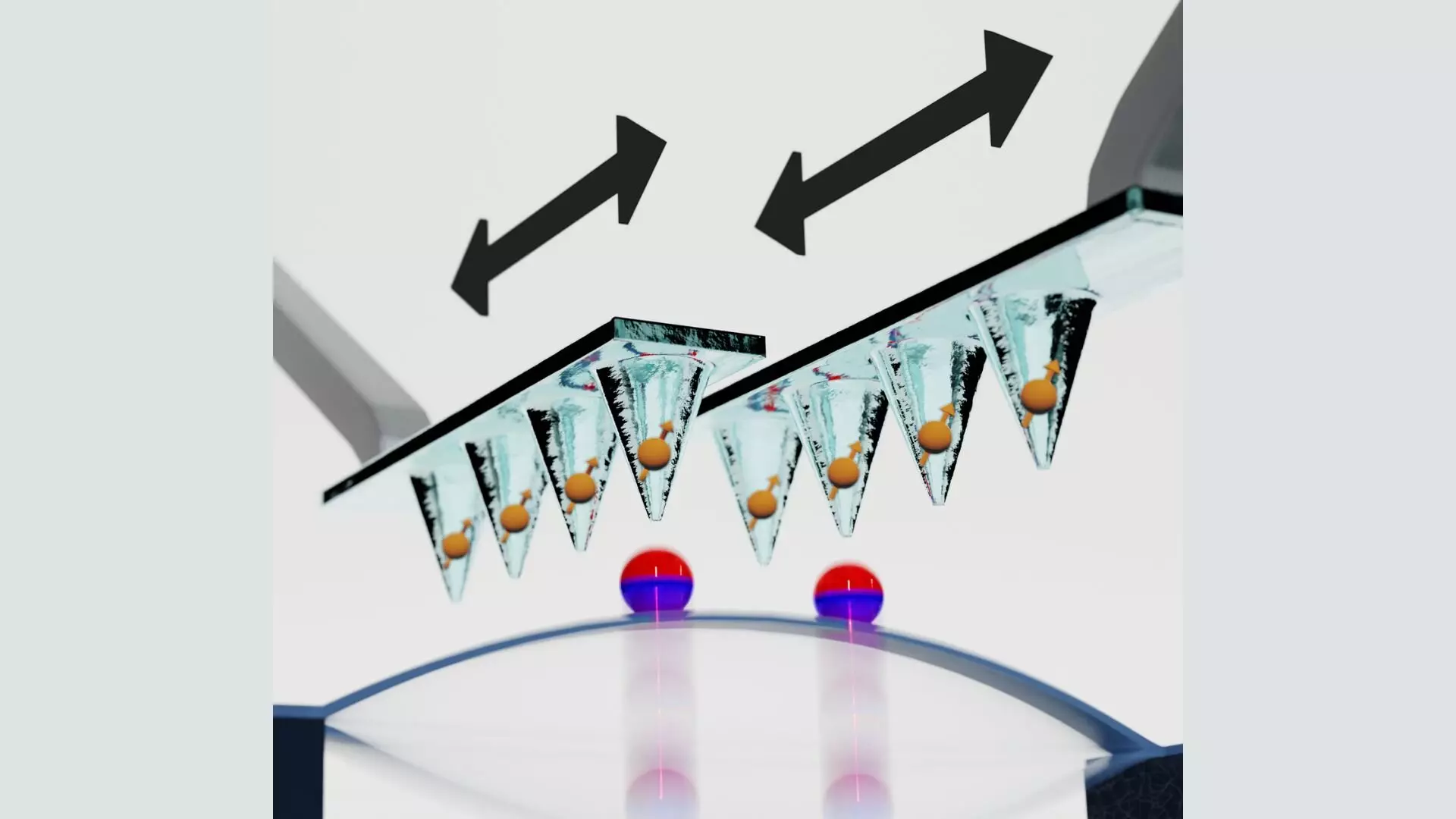As quantum technologies advance, the necessity for efficient, scalable quantum systems has become more pressing. Researchers are increasingly focusing on spin qubits—among the most promising candidates for quantum information processing. However, a significant limitation persists: while spin qubits exhibit long coherence times, a feature crucial for quantum computing, their scalability remains a formidable challenge. A recent study published in *Physical Review Letters* spearheaded by Frankie Fung from Harvard University offers fresh insights that could transform the landscape of quantum systems. This study proposes a novel integration of solid-state spin qubits and nanomechanical resonators, a combination that could significantly enhance the operational capabilities of quantum devices.
The Challenge of Interaction in Solid-State Spin Qubits
At the crux of the research lies the limitation of conventional interactions between spin qubits. Recently, advancements have been made using magnetic dipole interactions, but these methods are confined to short distances—typically within tens of nanometers. As Fung pointed out, the challenge of fabricating these tiny qubits in mutually close positions makes it exceedingly difficult to control large arrays of qubits essential for robust quantum processing. This problem of short-range interaction is where the proposal for nanomechanical resonators comes into play.
In essence, nanomechanical resonators act as mediators that could inherently solve the scalability issues associated with qubit interactions. By utilizing resonators to foster long-range entanglement, the research team opens up exciting avenues for the construction of intricate quantum systems that can manage greater numbers of qubits.
Innovative Use of Nitrogen-Vacancy Centers
Central to this novel architecture is the nitrogen-vacancy (NV) centers in diamonds. These unique structures consist of carbon lattices with embedded nitrogen atoms indicative of vacancies. NV centers possess extraordinary optical and electron spin properties that lend themselves well to the demands of quantum computing. The capability of NV centers to maintain long coherence times while being extremely sensitive to magnetic fields makes them ideal candidates for qubit implementation.
Moreover, their optical compatibility allows the seamless integration of light for processing and transmitting quantum information. The emphasis on using NV centers is not random; rather, it is a strategic decision that leverages their inherent properties to overcome existing limitations in spin qubit scalability.
Redefining Qubit Interactions through Mechanical Resonators
Fung and his colleagues propose a groundbreaking method to facilitate interactions among spin qubits by coupling them with a nanomechanical resonator. This resonant structure functions as an innovative conduit that can oscillate at high frequencies, effectively enabling qubits to interact over longer distances. The architecture involves using scanning probe tips equipped with NV centers that can be precisely maneuvered over a nanomechanical resonator. This not only promotes interaction among the qubits but also establishes programmable connectivity, an essential characteristic for constructing sophisticated quantum algorithms.
Additionally, the design involves a micromagnet situated on a silicon nitride nanobeam, further enhancing the architecture’s efficiency. This approach not just addresses interaction distance but also optimizes the manipulation of electron spin states, potentially revolutionizing how quantum information is processed and transferred.
Proof of Concept and Future Directions
To validate their proposed architecture, the research team conducted proof-of-principle measurements that demonstrated the ability to store coherent information within NV centers, successfully maintaining this coherence even when manipulating the qubit across variable magnetic fields. This experimental backdrop underscores the team’s confidence as it showcases the capability of their architecture to uphold coherence under mechanical transport conditions.
However, it is essential to note that while the quality factor demonstrated was impressive, current levels do not yet make this architecture feasible for practical applications. Fung highlights the notable advancements that need to be achieved, like enhancing interactions with an optical cavity, which could yield more precise measurements and enable the mechanical resonator to operate in its ground state.
The Road Ahead: Embracing a Hybrid Quantum Future
As they push forward, the researchers envision the use of nanomechanical resonators as critical intermediaries that can encompass various qubit types, capitalizing on the strengths of each while bypassing their individual limitations. This hybrid approach not only paves the way for the creation of more extensive and integrated quantum systems but also opens the door to a new paradigm of functionality. The seamless merging of mechanical and optical components encapsulates a robust approach towards future quantum computers, yielding systems with enhanced connectivity and control.
In summation, this novel framework not only lays the groundwork for addressing critical scalability issues but invigorates the ongoing discourse surrounding the integration of mechanics and quantum technologies. As we continue to unravel the mysteries of quantum computing, the work led by Fung and his team distinctly illuminates a path forward that could soon bring us closer to realizing the full potential of quantum systems.


Leave a Reply